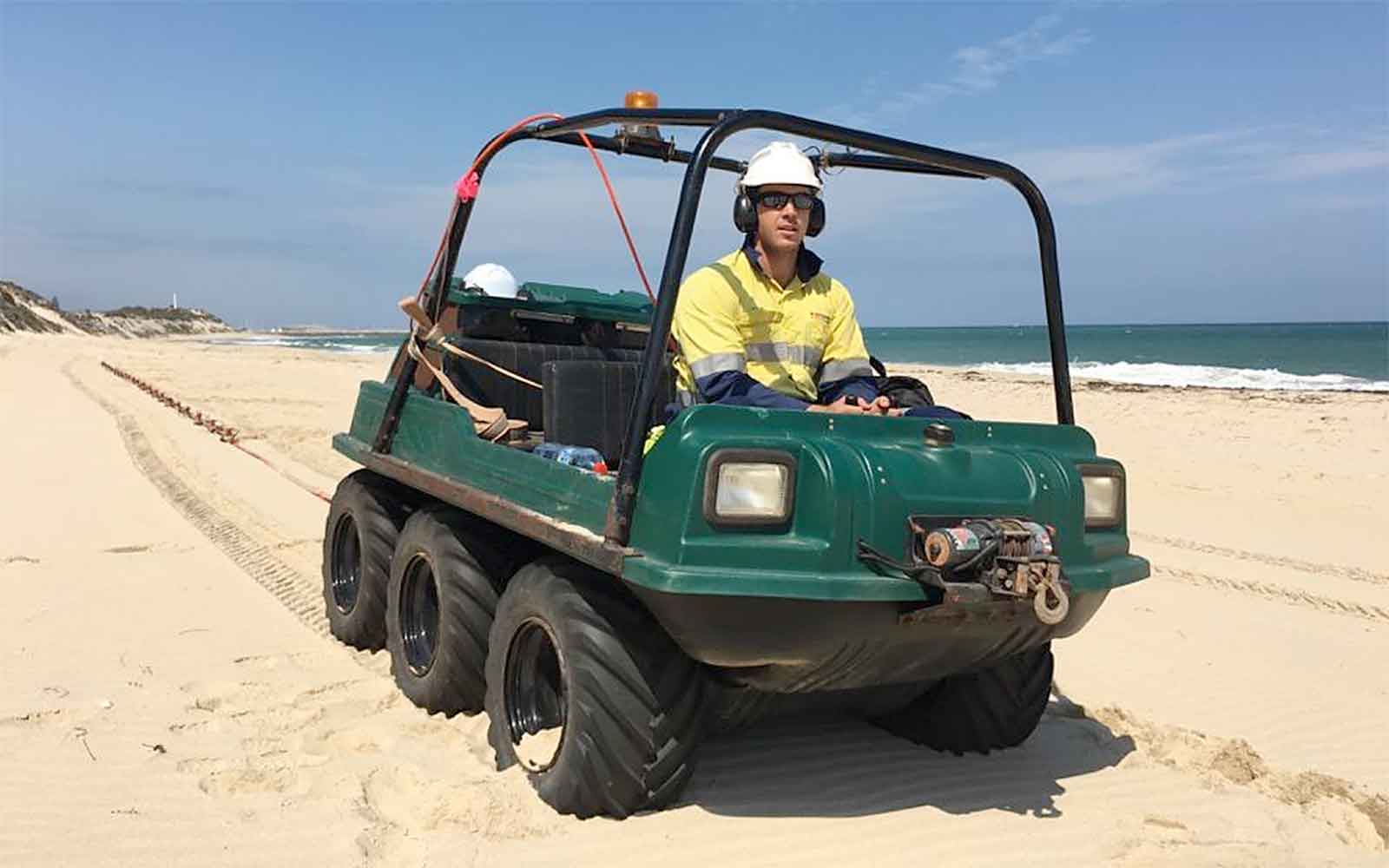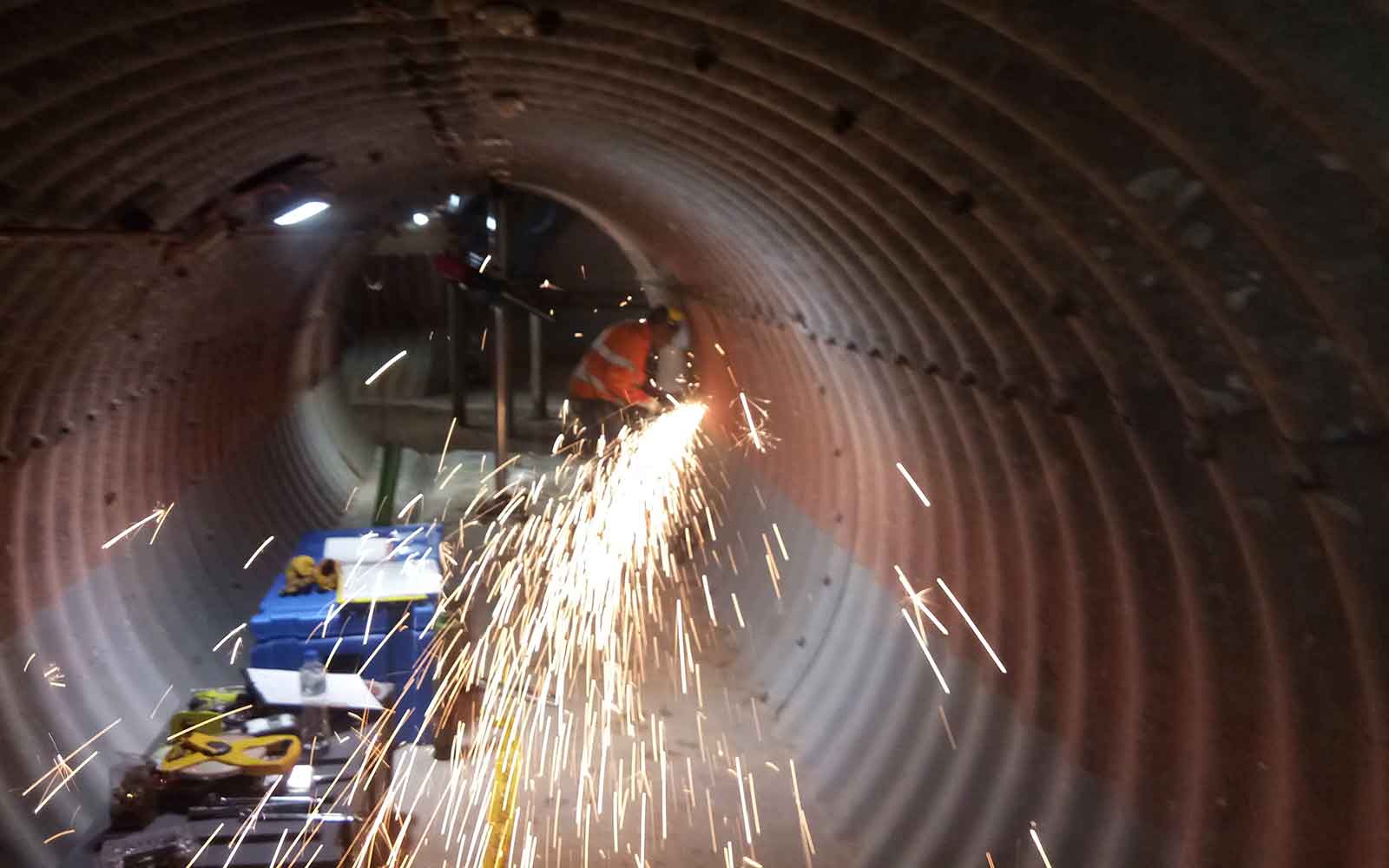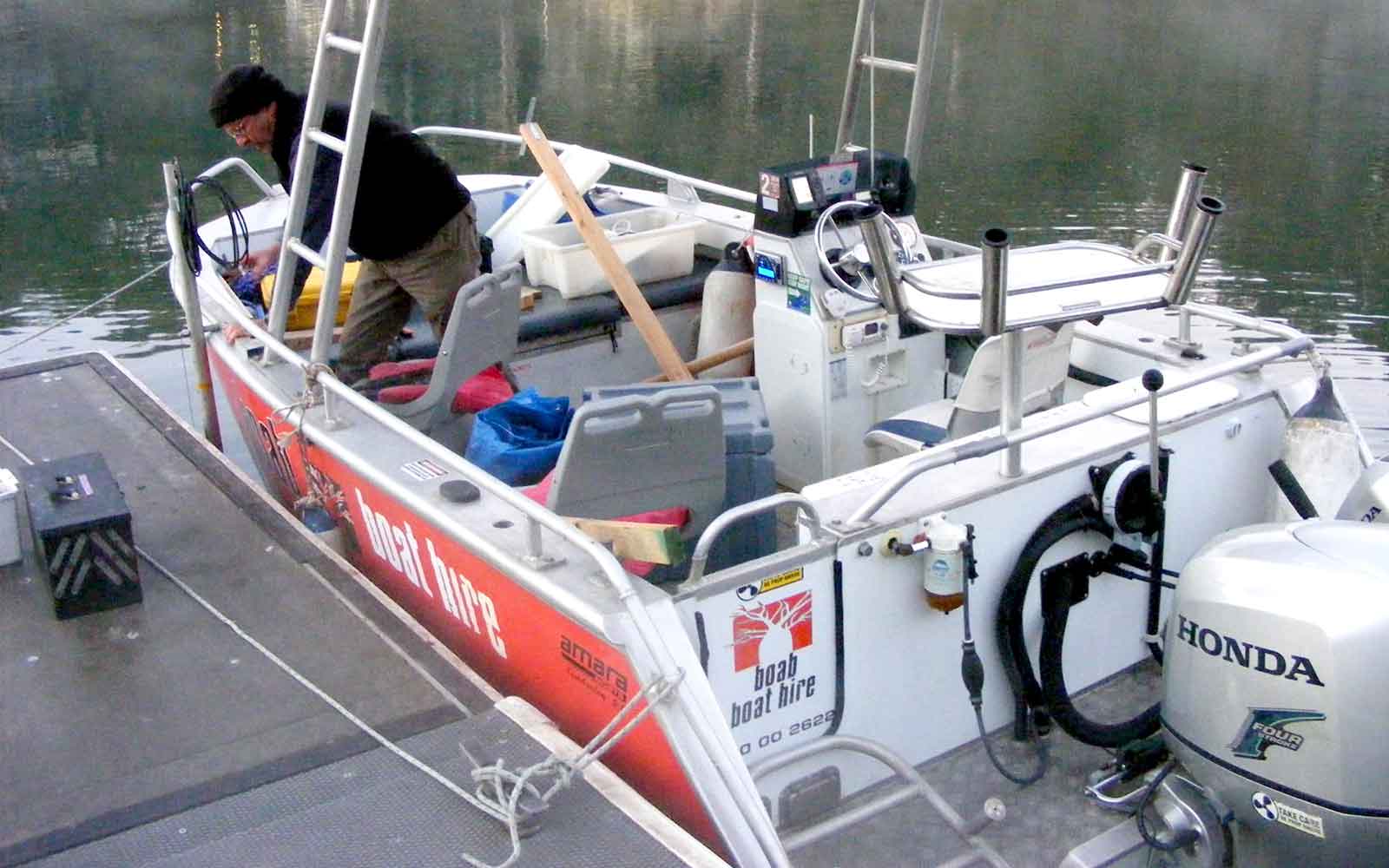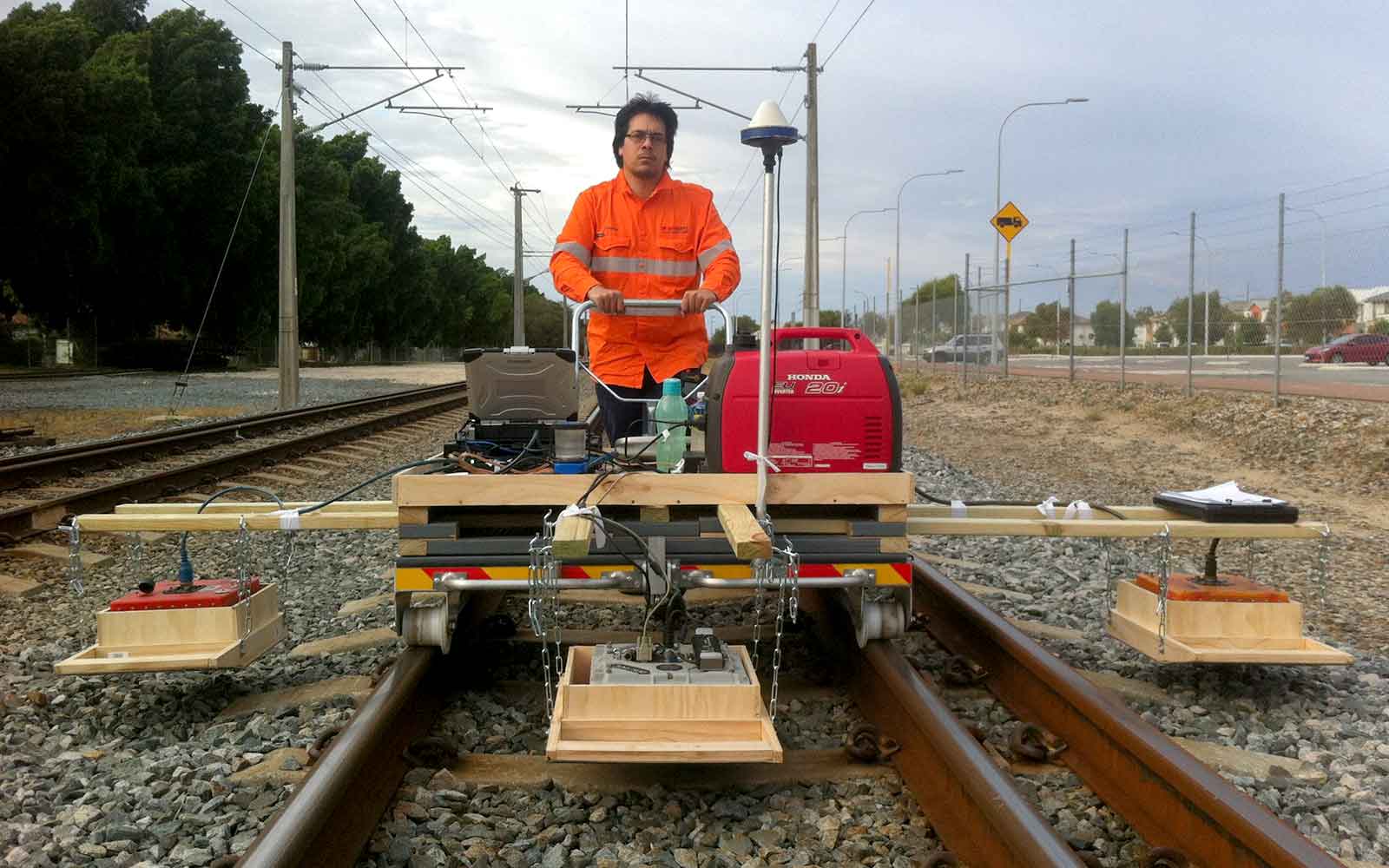Multi-Channel Analysis of Surface Waves
The Seismic Refraction method involves the measurement of travel times of seismic compressional waves (P-waves) that are generated at the surface.

MASW - Multi-Channel Analysis of Surface Waves
Applications
- Bedrock mapping
- Degree of sediment compaction
- Determination of geotechnical parameters (e.g. shear modulus)
- Void detection
- Liquefaction potential
- Subsurface profiling
- Imaging velocity inversions (hard layer overlying softer layer)
Method
The Multi-channel Analysis of Surface Waves (MASW) method is a non-destructive seismic method which uses the elastic properties of subsurface materials to determine the subsurface structure. By analysis of the dispersive properties of varying frequencies from a single seismic source, shear-wave velocity (Vs) and associated geotechnical parameters can be determined.
MASW uses an active seismic source such as a hammer, accelerated weight-drop impact, or airgun (firing compressed air or nitrogen for marine projects) to produce seismic energy consisting predominantly of Pressure (P) waves and Shear (S) waves. MASW uses the dispersive qualities of a particular wave with both P- and S-wave components called a surface wave (Raleigh on land and Scholte in water). It provides information on the shear-wave velocity to a depth determined by the frequency range of the energy source and array configuration.
Seismic surface waves have dispersion properties that traditionally utilised body waves lack. Differing wavelengths have different depths of penetration and therefore propagates with different phase velocities, with an increase in wavelength being proportional to the increased depth of penetration. As the surface wave is the dominant wave generated from any seismic source, MASW data quality (signal to noise) tends to be higher than other seismic methods such as seismic reflection or refraction.
Data Analysis & Presentation
Analysis of the collected MASW seismic records is concentrated on the S-wave dispersion component. Dispersion curves are extracted for each collected record from the overtone image showing the percentage intensity of phase velocity versus frequency. These curves are then inverted to produce 1D S-wave soundings typically to a depth of up to 30 m. The calculated 1D soundings can then be compiled and gridded to produce 2D sections showing the variation in S-wave velocity both laterally along with the profile and with depth.
Case Studies
GBG has completed over 1000 projects since its conception with multiple stakeholders and countless clients. GBG is proud to showcase some of these projects.
Enquire Now
We look forward to discussing your project with you, please complete the form below or contact one of our offices directly.
Please note: GBG Group is compliant with the General Data Protection Regulation (GDPR). To learn more about how we collect, keep, and process your private information in compliance with GDPR, please view our privacy policy. *







